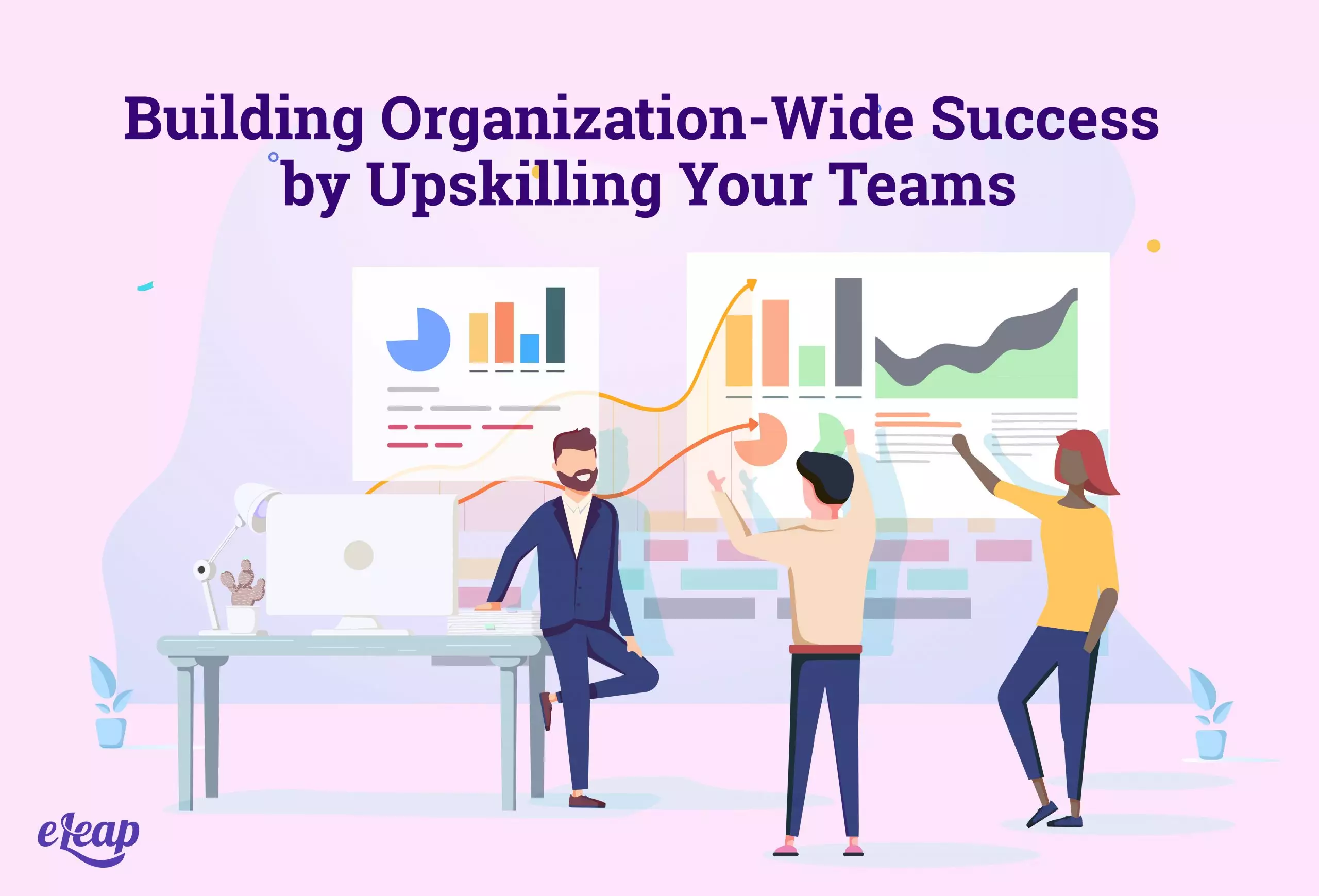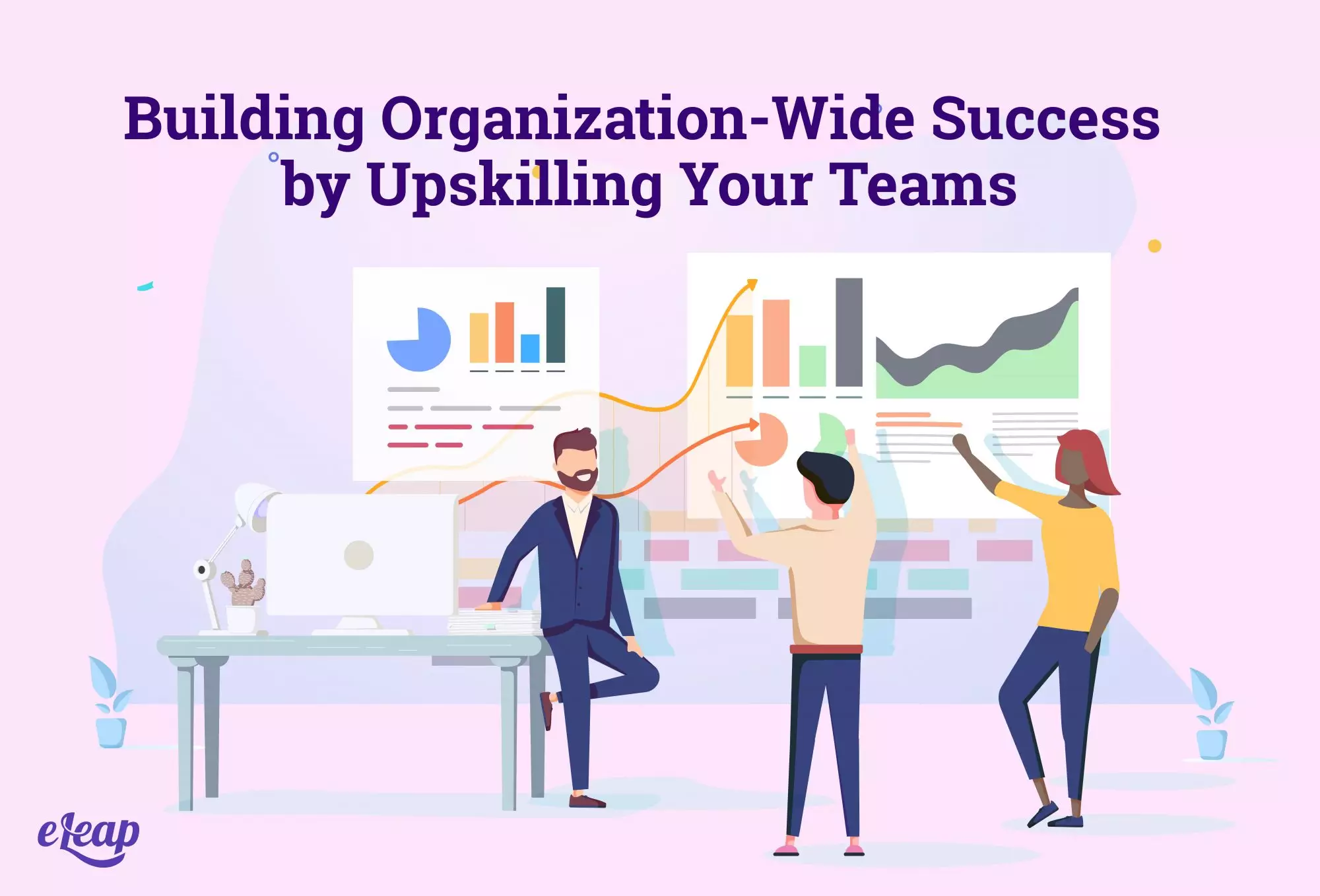Building Organization-Wide Success by Upskilling Your Teams

It’s a tough competitive world for companies and organizations in need of new talent. Fresh talent is hard to come by. With increasing levels of competition for talented new hires, you could be facing a serious shortage of potential recruits.
However, there may be a simpler solution than you realize. While you should keep casting your recruitment net, you should also consider the pool of talent to which you already have access. Your workforce is the ideal place to start your search for people to fill open slots.
Why promote from within? How do you deal with the lack of skills needed to bump those employees up to higher positions? The answer is to invest in their success (and thereby your organization’s success) through upskilling and education.
In short, by providing your employees with the chance to improve themselves professionally, you get the chance to retain, groom, and promote in-house talent. What do you need to know about upskilling? We’ll delve into that in this post.

Does the Skills Gap Affect Your Organization?
First, let’s address a prevalent myth. That is, the skills gap is not real, at least not for many organizations. The truth is that there is a gap in critical skills, particularly when it comes to technical capabilities. You can see this reflected in the lack of candidates for STEM jobs, as well as the ongoing shortage of nurses and other trained medical professionals. Positions that require a high degree of technical knowledge often go unfilled.
However, it’s not just tech skills that are lacking. Practical skills are also lacking. This causes problems for skilled trades – the shortage of plumbers, skilled carpenters, and welders is disrupting many different industries.
As you can see, not only is the skills gap real, but it likely affects your organization in some way. A growing number of businesses find that the gap prevents them from filling key positions. Leaving those positions open might seem like a good interim strategy, but the truth is that it costs your business money.
How Does the Skills Gap Cost Money?
To put it as bluntly as possible, if you lack the workforce to deliver products or services to your customers quickly, effectively, and professionally, the skills gap is costing you money. How much money varies from business to business and even industry to industry. However, it is present, and it is considerable. It’s also going to increase as more and more organizations feel the effects. Ultimately, it could cost the US economy $2.5 trillion over 10 years. Yes, that’s a trillion with a T.
Upskilling to Offset the Skills Gap
How do you address the skills shortage? How do you ensure that you’re able to fill those empty positions with qualified, trained professionals? In a day when hirers are struggling to find qualified recruits, that might not seem possible, but it is. Upskilling your current workforce is the solution.
What’s Upskilling About?
Upskilling is nothing more than the process of training your current employees to improve their professional skills. It allows you to take an existing employee, assess their capabilities, interests, and talents, and then deliver training that helps them become more capable. Then you can promote from within, filling open slots higher up in the company with trained in-house talent.
How do you do that, though? It’s not all that difficult. However, there are a few things that you’ll need to do and have in place first.
Know Your Needs
First, make sure you have a good idea of what you need in an employee. What skills are you lacking? What knowledge is necessary? Does it require professional credentialing? What skills will your organization need moving forward? This is where a skills and competencies management learning management system can make a big difference.
Once you’ve determined the skills you need right now and moving forward, it’s time to assess where your workforce stands. Do you have employees with those skills already? Do other employees have an aptitude for those skills or an interest in developing them?
For instance, do you have non-technical employees who might be a good fit for software engineering? Perhaps you have employees with some technical skills who have an interest in moving into more advanced areas, such as machine learning?
Create a Strategy
The next step is to determine how you will get from where you are now to where you want to be. Determine what training needs to occur. Set a budget for content creation and cover the cost of delivering content to your employees.
Make sure that you have the right LMS in place, too, and account for that in the budget if you don’t already have a learning management system. Also, remember that this isn’t a once-and-done sort of thing. You need to continually invest in your employees through ongoing training and development.
Deliver Content in the Right Format
Think that upskilling employees means forcing them to sit and watch endless slideshows? Today, that’s not the case. In fact, the right LMS makes it simple to deliver compelling training content in a format that fits each learner’s unique needs.
You can still use text-based content, but other options may work better, such as video training, interactive content, game-based training, mentorships, and so much more. You can also consider blended learning which combines online training and in-person, classroom-style learning. The options are virtually limitless; just make sure that you understand how each employee learns best and cater to that.
Accessible Learning for Upskilling
The skills gap is set to wreak havoc on the US economy in the next decade. However, it doesn’t have to pose a threat to your business. With the right LMS and a dedication to helping your existing employees develop professionally, you can ensure that you have the right talent in key positions, boost employee retention, and see growth and success.
However, don’t assume that upskilling comes without effort or cost. It takes time, requires dedication and vision, and will have a price tag. With that being said, the savings you see will offset the financial costs, and with the right strategy, you can create the most qualified workforce possible.